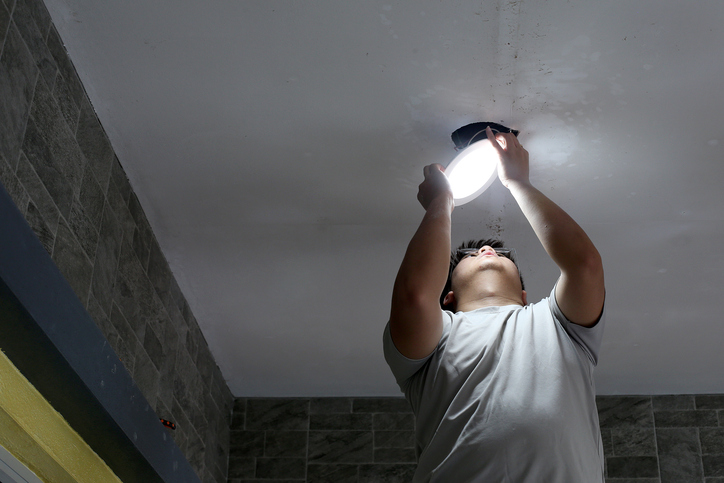The global shift towards sustainability has illuminated the significant role that lighting plays in our energy consumption and environmental footprint. Among the various lighting options available, Light light-emitting diodes (LEDs) stand out for their efficiency and eco-friendliness. As society increasingly embraces LED lighting, understanding its environmental impact becomes crucial. This article explores how LED lighting installation not only enhances energy efficiency but also contributes positively to the environment.
1. Understanding LED Technology
LEDs, or Light light-emitting diodes, are semiconductor devices that illuminate when an electric current passes through them. Unlike traditional incandescent or fluorescent bulbs, LEDs convert a higher percentage of energy into light rather than heat. This fundamental difference makes LEDs more energy-efficient and longer-lasting, resulting in significant environmental benefits.
2. Energy Efficiency and Consumption
One of the most significant environmental impacts of LED lighting is its energy efficiency. LEDs use up to 75% less energy than traditional incandescent bulbs. This reduced energy consumption leads to lower greenhouse gas emissions, especially when the energy source is fossil fuels. By switching to LED lighting, households and businesses can significantly decrease their electricity bills while contributing to a cleaner environment.
3. Longevity and Waste Reduction
LED lights have a remarkably long lifespan, often lasting 25,000 hours or more, which is higher than the 1,000 hours typical of incandescent bulbs. This lifespan not only reduces the frequency of replacements but also minimizes waste. Fewer discarded bulbs mean less strain on landfills and reduced environmental impact associated with manufacturing and disposing of lighting products.
4. Reduction of Hazardous Materials
Traditional fluorescent bulbs contain hazardous materials like mercury, which can pose a threat to both human health and the environment if not disposed of properly. In contrast, LEDs are free of toxic materials, making them safer for both consumers and the environment. The absence of harmful substances in LEDs simplifies disposal and recycling processes, contributing to a healthier ecosystem.
5. Lower Heat Emission
LED lights generate very little heat compared to incandescent or halogen bulbs, which release a significant amount of energy as heat. This lower heat emission reduces the demand for air conditioning in spaces where LED lighting is installed, leading to lower energy consumption for cooling. As a result, this contributes to overall energy savings and reduced carbon emissions associated with air conditioning.
6. Enhanced Light Quality and Directionality
LEDs provide high-quality, directional lighting that minimizes wasted light. This capability allows for more efficient lighting designs, reducing the need for excessive fixtures and energy usage. By directing light where it is needed, LEDs can illuminate spaces more effectively while decreasing the amount of energy consumed, thereby promoting sustainable lighting practices.
7. Impact on Wildlife and Ecosystems
The adoption of LED technology can also positively impact wildlife and ecosystems. Traditional outdoor lighting can disrupt natural behaviors in animals, particularly nocturnal species. LEDs can be designed to emit specific wavelengths of light that are less disruptive to wildlife, reducing light pollution and preserving natural habitats. This shift fosters a healthier relationship between human activity and the environment.
8. Smart Lighting Integration
These systems help ensure that lights are only used when necessary, significantly reducing energy consumption and contributing to sustainability.
9. Cost Savings and Economic Benefits
While the initial cost of LED installation may be higher than traditional lighting, the long-term savings on energy bills and reduced maintenance costs make LEDs a financially wise investment. Businesses and homeowners can recoup their investments quickly, and the savings can be reinvested in further sustainable initiatives, promoting a cycle of environmental responsibility.
10. The Future of LED Lighting and Sustainability
As technology continues to evolve, the future of LED lighting holds even more promise for environmental sustainability. Ongoing research and innovation in LED design and energy efficiency will likely lead to even greater reductions in energy consumption and environmental impact. By embracing LED lighting today, individuals and organizations contribute to a sustainable future that prioritizes ecological health.
The environmental impact of LED lighting installation is profound and multifaceted. From reducing energy consumption and hazardous waste to supporting wildlife and promoting sustainability, the benefits of LEDs extend far beyond mere illumination. As society continues to prioritize eco-friendly practices, the shift to LED technology represents a critical step toward a more sustainable future.
Are you ready to make a positive impact on the environment? Consider upgrading your lighting to LED today! Explore our range of LED products at Cline Electrical Service and join the movement towards a sustainable future. For more information, call us at 540-380-3886!



